If you were to ask a bible-only preacher if he owns a hand-written copy of the bible in Greek dating back to the fourth century AD, he may be quite confused. Even some sincere bible-only believers have never thought about where the bible actually came from. (Some people think that Jesus personally dictated the King James Bible in English in 1611.) But the bible-only Christian may be surprised to hear that the facts about the bible’s origin are all on the side of the Catholic Church.
Catholics don’t just read the bible; our Church produced the bible (under the inspiration of the Holy Spirit, of course!) In fact, the Catholic Church owns the single most elaborate and complete ancient bible in existence. It’s called the Codex Vaticanus, and it’s an incomparable treasure of faith.
Nothing on earth like it
The Codex in question is one of the wonders of the world. It’s not an exaggeration to say there is nothing quite like it on earth, and only two or three others that come close. The Codex is kept in a vault in the Vatican Library for safekeeping. (It’s not wise to leave fourth century manuscripts lying around on desktops.)
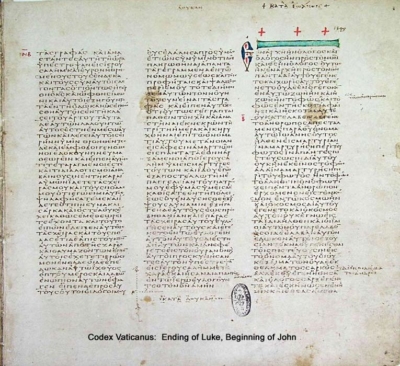 In contrast to its contemporary, Codex Sinaiticus (see my earlier article, “Not Just Any Old Codex”), whose pages are divided among four different libraries and museums throughout the world, Codex Vaticanus is fully intact, one single book, and has been sitting in one place, the Vatican archives, since at least 1475.
In contrast to its contemporary, Codex Sinaiticus (see my earlier article, “Not Just Any Old Codex”), whose pages are divided among four different libraries and museums throughout the world, Codex Vaticanus is fully intact, one single book, and has been sitting in one place, the Vatican archives, since at least 1475.
If you calculate the time frame from the 4th century to 1475, you’ll see that the Codex was over 1000 years old by the time it reached the Vatican. It’s not clear where the book resided for those 1000 years, but it’s also not important, for we know it resided in the heart of the Church.
A living church with a continuous existence from the time of Christ kept this unique document safe. No government could possibly have done that because no single government has lasted that long.
The peculiarities of a codex
As noted in the previous article, a codex is an early form of a book, when bookmaking was a new science. The word “codex” (plural, codices) comes from the Latin term caudex which means “tree trunk” which gave its name to wax covered wooden writing tablets common in the ancient world, the humble precursors of books.
Writing for publication in antiquity was usually done on a paper-like substance called papyrus, which made it possible to preserve and disseminate documents (such as the earliest versions of the New Testament). But that was a fragile and cumbersome way to store written materials, and few if any papyrus documents survive intact. Finally, someone came up with the great idea of writing on dried-out skins of animals called parchment (or vellum), and the concept of the “book” was born.
Parchment made books possible because of three advantages it had over papyrus:
- The material was more durable than papyrus, so it lasted longer;
- Scribes could write on both the front and the back of parchment because the ink didn’t bleed through, which allowed for the formation of pages (or folios) that could be bound into leaves of a book; and
- Bound folios could be transported more easily than scrolls for the purposes of teaching and evangelization.
The book: what a great invention!
One more advantage of parchment is that, since the ink didn’t fully penetrate the page, previous writings could be erased so the parchment could be used again (a re-used parchment is known as a palimpsest).
All of this was courtesy of the ancient Catholic Church, whose scribes, bishops and monks left us an amazing array of manuscripts documenting the early centuries of Christianity. (There are also many legal codices – compilations of secular laws and decrees – which have survived.)
The greatest of all these ancient manuscripts, however, are the biblical codices, the queen of which is the Codex Vaticanus, arguably the most complete of all ancient books.
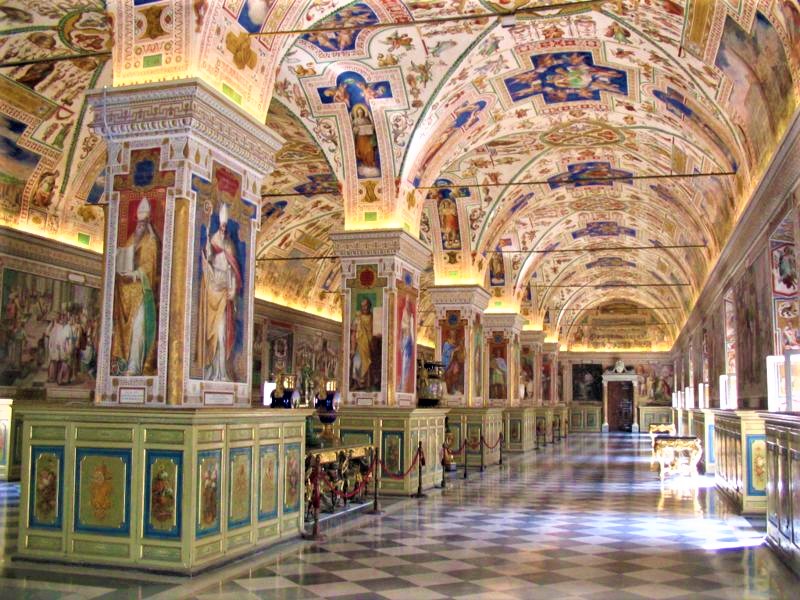
The Ornate Sistine Hall of the Vatican Library
A few facts about Codex Vaticanus
The pages of ancient codices were square or nearly square and divided into several vertical columns of text on each folio. Vaticanus features three columns per page, Sinaiticus four. The text is written entirely in capital letters and the columns consist of 12 to 14 letters each, totally without punctuation or breaks between chapters: imagine trying to read a text like that, even if you knew Greek! The chapter and verse divisions of the bible were added much later, in the 12th and 14th centuries.

The Vatican Library located within Vatican City
The folios of Codex Vaticanus measure a perfectly square 10.6” x 10.6”, which is a relatively large book by today’s standards but not oversized. We can compare that to the larger Sinaiticus which measures 15” x 13.6”, roughly the size of a coffee table book today.
Scholars believe the Codex Vaticanus was composed in the early 4th Century (about 50 years before Sinaiticus) and recognize it as the best and most complete witness to the early texts of the four Gospels, the Acts of the Apostles and St. Paul’s writings. History takes its toll, however, even on such a well-preserved manuscript.
Vaticanus is missing some of the later books of the New Testament such as the Book of Revelation which someone added to the Codex at a later time. That part is clearly written in a different hand and uses small case letters rather than the uppercase letters of the rest of the Codex. (The Wikipedia entry on Codex Vaticanus provides more detail on the contents.)
Vaticanus represents the most complete Greek version of the Old Testament too (known as the Septuagint), although the books are not fully accounted for either. The first twenty leaves of the Book of Genesis, for example, are missing, as well as the two books of Maccabees and a few other minor parts.
For a book that is 1700 years old, the Codex is remarkably intact, perhaps owing to its jealous guarding by Church authorities through the ages. There are many humorous accounts from annoyed Protestant scholars who received permission to study the Codex only to be assigned two or three Vatican officials to look over their shoulders and watch their every move while they examined the great book. I guess that kind of diligence is what is needed to keep an ancient manuscript in one piece for 1700 years!
One interesting historical tidbit: when Napoleon overran Rome in 1809, he sacked the Vatican library and art collection. (He was a tyrant but not a fool.) One of the precious treasures he stole from the Library was the Codex Vaticanus which he brought back with him to Paris. Thankfully, the French returned the manuscript to the Vatican when Napoleon fell in 1815.
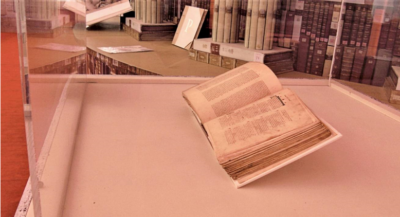
The Codex on display at the Vatican Library
The Vatican recently digitized photos of the Codex Vaticanus so you can see pictures of every leaf of it at this website. (Make sure you click the dropdown menu on the upper left of the screen to see a list of all the books. Sorry, the names of the books are in Latin, but most are recognizable to anyone familiar with the books of the bible.)
The significance of the Codex Vaticanus
In addition to the incredible testimony to God’s written Word that this Codex represents, I hinted in the opening at its other significance for Catholics. No one can fairly accuse the Catholic Church of being “unbiblical”. Let’s just state for the record several concise facts:
- Were it not for the Catholic Church, Christianity would have no New Testament at all; the Catholic Church produced those writings under the guidance of the Holy Spirit;
- Were it not for the Catholic Church, numerous books of the Old Testament would likely have been lost when the Jewish rabbis destroyed all ancient scriptures that were not written in Hebrew (here we refer to the books that remain in the Catholic version of the Old Testament: Judith, Tobit, 1-2 Maccabees, Wisdom, Sirach, Baruch and parts of Daniel and Esther);
- Were it not for the Catholic Church, we would not even know what books make up the bible – this list was determined authoritatively by Church councils in the early centuries and confirmed by Church councils in later centuries;
- Were it not for the Catholic Church, we would have no ancient manuscripts of the bible; in addition to Vaticanus, many other handwritten scriptural texts have been handed down faithfully for centuries by Church authorities. Collectively, they help us know with precision what Our Lord wanted His written word to communicate to us.
In short, the Catholic Church produced, preserved, translated, venerated and has made available the sacred written word of God to twenty centuries of believers and non-believers alike. This custody of the sacred gift of the scriptures sets the Catholic Church apart from all others (with the exception of generations of rabbis who had previously preserved the Hebrew Scriptures) as the most zealous guardian and promoter of scripture in history.
Most importantly, were it not for the Catholic Church, we wouldn’t even know that Jesus was incarnated as a man to live among us. After the eyewitnesses of the first century died out, all future generations had to learn about that event from something called the bible.

Soul Work
Ask yourself how long it’s been since you’ve picked up the bible and read it. What a gift it is to have the written Word of God at our side every day, contained as it is in one simple book that anyone can read.
We don’t need to be scripture scholars to become familiar with the bible. We only need to reverence the Word, who is Christ Himself. We love what we reverence, and we try to make such precious gifts our own. This means we should strive to read some part of the bible each and every day!
When we read scripture, we are putting ourselves into contact with Truth Himself, with God’s way of thinking. It is a personal encounter with Him. It is not just another religious obligation among many. He forms our thinking and gives us our values. “Reverence for scripture,” said St. Jerome, “is reverence for Christ.”
A few minutes a day spent reading scripture will bear great fruit in your spiritual life.
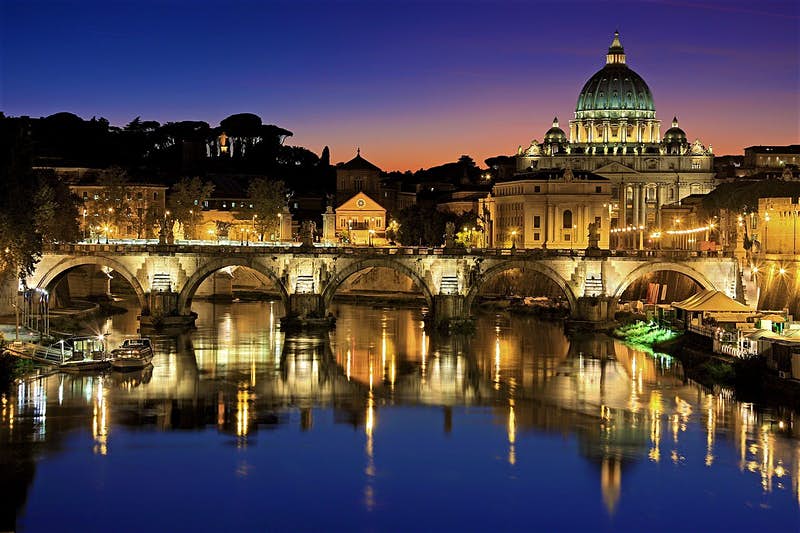
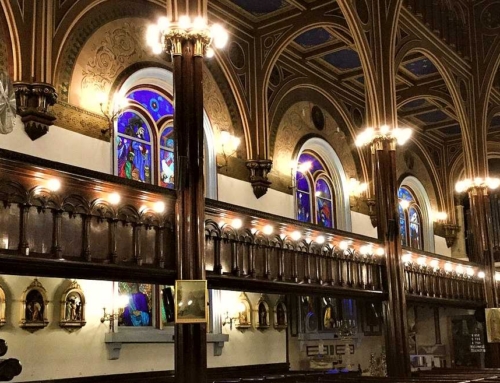
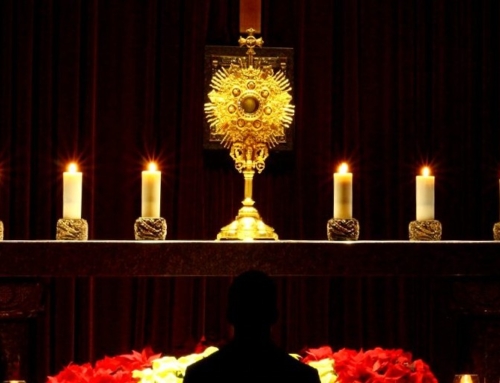

You should mention the FACT that both old and new testaments were written by Jews, xcept Luke and maybe part of Daniel chapter 4-written by King Nebuchadnezzar!!!!
Johnny D, thanks for the feedback. My audience is quite astute so I didn’t think that fact needed mentioning, but thanks for bringing it to my attention. Didn’t know about Daniel 4! All the best, Peter D.
Moses was not from the tribe of Judah, nor were many other of the writers. So, no, it was not written by “descendants of the tribe of Judah”, aka Jews. And the tribe of Judah is the supposed origin of the moniker, and the distinguishing factor for citizenship in Israel, aka Jewishness. So no, by and large the Bible was not written by Jews.